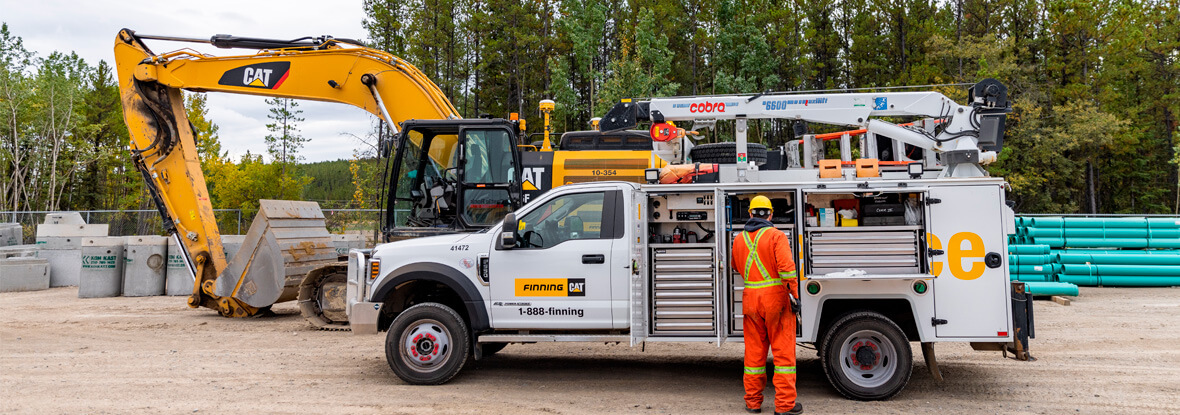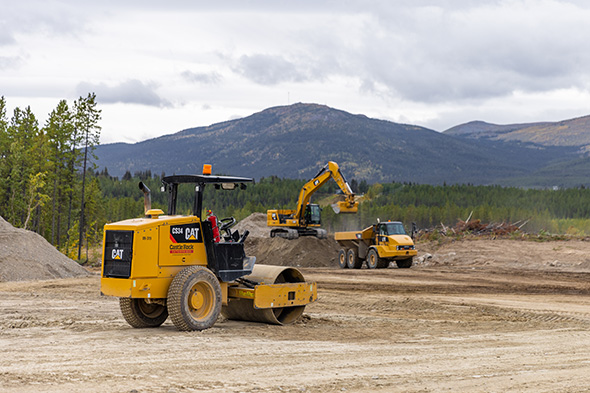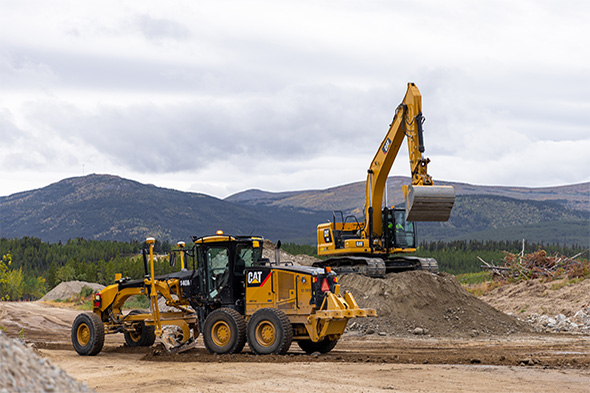
Located in Canada's northwestern corner, bordering the Beaufort Sea to the north, Northwest Territories to the east, Alaska to the west, and British Columbia to the south, the Yukon Territory is one of the country's least populated areas with just over 44,000 residents. Whitehorse is the capital and the largest settlement, home to a little more than half of the territory's population. Its growth was fuelled by the historic gold rush in the late 1800s as the Yukon attracted prospectors and adventurers. The author Robert W. Service wrote about the unforgiving wilderness and penned in 1907 the Law of the Yukon where he maintained "That only the strong shall thrive; that surely the weak shall perish, and only the fit survive." That's some serious toughness.
In this remote environment, preparedness cannot be overstated. And, as Service said, "The strong thrive." Imagine building a construction business in this challenging environment with vast areas undeveloped and the lack of services that we take for granted in the south. It's about navigating some extreme conditions and partnering with some great people.
Ron Bonnycastle, president of Castle Rock Enterprises, knows a thing or two about it. In 1995 Ron Bonnycastle and his father Rick started Castle Rock, and it has grown from a small father and son aggregate business running a single loader and screening plant into one of the Yukon's leading aggregate suppliers and civil contractors for key community projects. What Bonnycastle has learned is that to thrive in a remote northern environment you need a responsive and innovative heavy equipment supplier and a deep-rooted partnership with the community.




Working in construction is challenging, even in Canadian cities, but when you are so remote and so far north, these challenges are significantly multiplied. Whitehorse is classified as a subarctic climate with relatively comfortable temperatures in the summer and frigid snowy conditions through the long, cold, dark winter. Downtime is the worst enemy in construction and the conditions in the Yukon take it to the next level.
Bonnycastle explains, "We only have about seven months of install time. Every week is crucial to our business and weather throws us enough curveballs. We can't wait for parts and service." Imagine having one of the shortest construction seasons and road bans that shutter operation for months on end. In addition, the remote location coupled with a small population intensifies the already existing extreme labour shortages. Combine that with affordable housing challenges and retail prices that rival big cities, and it creates formidable conditions that make running a successful operation tough.
Castle Rock mitigates downtime by partnering with a local heavy equipment supplier. Bonnycastle notes that "Finning has a local facility and they support their gear. We're a team. They work day-to-day and shoulder-to-shoulder with us. They understand the unique challenges of operating in the Yukon."
The commitment started with that very first loader in 1995 and as the work grew, so did Castle Rock's need for skilled operators and equipment. By investing in the Whitehorse marketplace, the local facility is incredibly responsive with parts and service. Today, Castle Rock operates an extensive 53-piece Caterpillar fleet, one of the largest in Canada's north. Staying ahead of the curve is just as crucial as equipment reliability when it comes to maintaining competitiveness. It's evident to Bonnycastle that technology that used to be seen as a luxury is now a standard for operation. Castle Rock has embraced smart technology that has allowed it to take on bigger and more complex projects.
Castle Rock had to embrace new technology in order to successfully bid on a runway project at Erik Nielsen International Airport, which was completed in 2014. The company performed the extension and resurfacing of runway 32L-14R. It was a $3.5 million project that required precise grading specs. GPS-equipped machinery and the latest in surveying technology from Sitech helped enhance productivity and achieve to-the-millimeter accuracy to meet the clients' tight tolerances. Bonnycastle knows that smart technology on his heavy equipment opened the door to the work and notes that, "Smart technology, when there is limited or non-existent surveyor availability, takes the guesswork out of the project and helps with navigating elevations, excavations, and tight grading specifications."
Taking on new technology is a challenge, but making the leap is a simple decision with the right partnerships. Adopting technology requires extensive expertise and training and Castle Rock credits its supplier. "Finning stands behind their tech. They bring in support to help train and to provide expertise."
Remote locations typically see a delay or a lag in adoption of new technology, not because the business doesn't see its importance, but rather the local support of the tech is non-existent. Bonnycastle sees a direct correlation to the adoption of technology backed by a local supplier and the competitive advantage in the marketplace as he notes that, "The expertise and technology that Finning provides Castle Rock has put us years ahead of our competition."
It is through this control that sites can be managed on tight margins, while keeping downtime low and productivity high. Technology has also proven helpful with operator training and improving operator performance – it makes good operators great ones, while also keeping them safe, comfortable, and happy. All are important for attracting and retaining employees in a competitive labour market.
As is the experience of many family-owned businesses, when the elder Bonnycastle – and 50/50 business partner – was looking to retire, it was inevitable that the business would go through transition. At the time, a buyout, while considered, was not the route that Bonnycastle wanted to pursue. Instead, Castle Rock approached a few First Nations Development Corporations regarding ownership. Two big priorities in the sale were to ensure ownership would remain in the north and that the company would find owners that would prioritize community focus in the same way the Bonnycastles did.
Castle Rock Enterprises became 100 percent Indigenous owned when Dakwakada Capital LP, a business entity of Champagne and Aishihik First Nations (CAFN) purchased and invested in Castle Rock. It allowed the company to reach a new level of growth. "CAFN has a strong business development team and focuses on the role of Human Resources in the heavy equipment industry," and Bonnycastle knows that with this added resource, Castle Rock can tackle challenges in labour recruitment and retention.
It's not only the partnership with the supplier that has led to Castle Rock's success. Castle Rock's mark on the community extends well beyond its project work. The contractor has long supported youth sports and community events. It really is deep-rooted in the community where it works, lives, and plays. As the climate of northern industry changes with acts of reconciliation, more Indigenous-led projects are on the horizon and Castle Rock is poised to take on new opportunities with a depth of expertise and strong partnerships.
Castle Rock is excited about new and unique opportunities on the horizon. By prioritizing professional training for its employees on cutting-edge equipment and technology, backed by an invested Yukon supplier renowned for exceptional sales and service of heavy equipment, Castle Rock positions itself as a catalyst for bidding on and accepting exhilarating new projects that fuel its growth.
Bonnycastle says it best: "After 35 years, I still like coming to work. I am just so thankful for the people we have partnered with."
And at the end of the day, that is what it is all about. It's the people and the community that make going to work enjoyable and by partnering with the community and engaging Indigenous participation in the industry, the future looks great.
Click here to read the story in Heavy Equipment Guide.
Share This